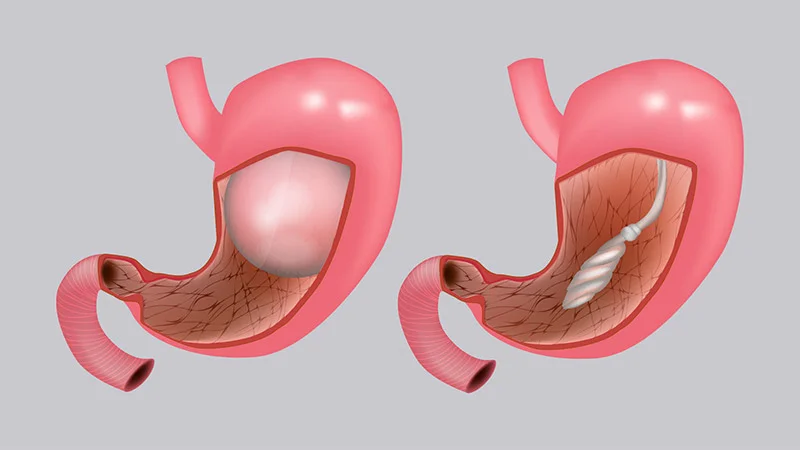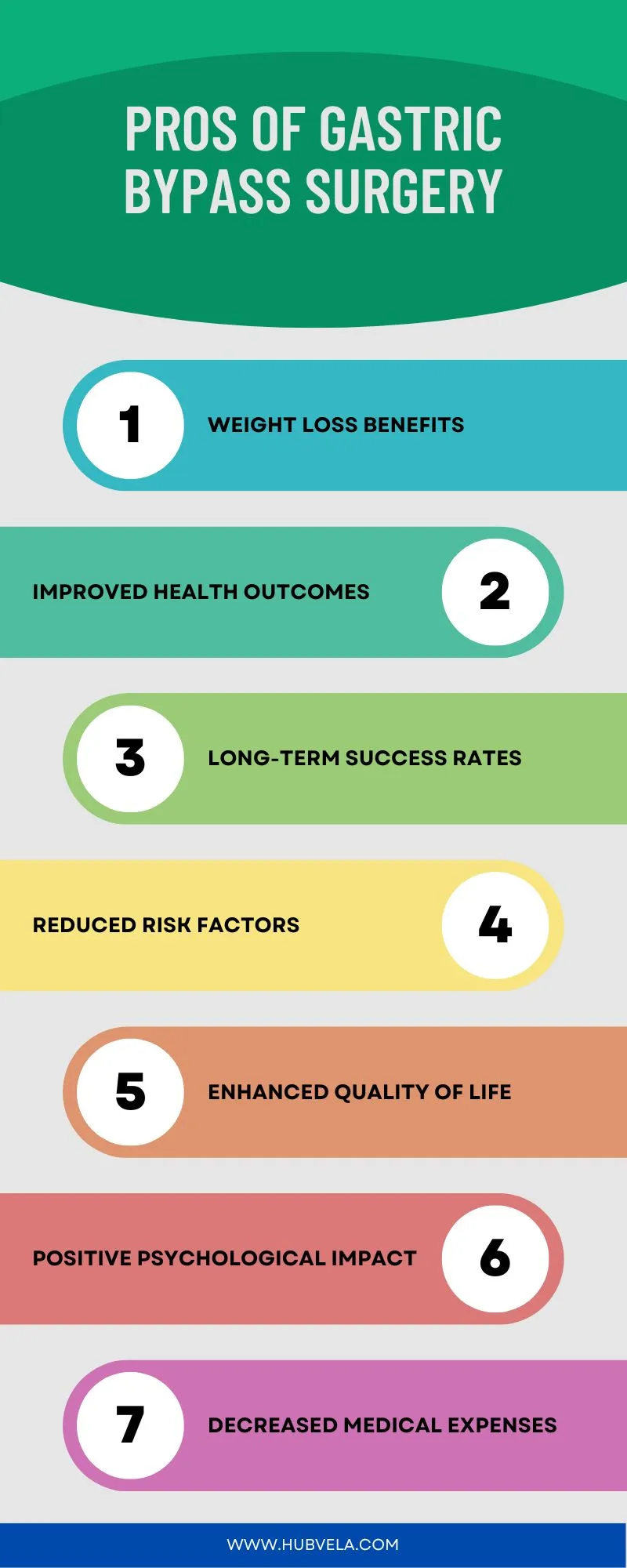8 Key Facts About Gastric Balloons: A Non-Surgical Solution to Weight Loss
As obesity rates continue to rise, many individuals are seeking effective weight loss solutions. Among the options available, gastric balloon offer a non-surgical alternative that has gained popularity for its effectiveness and simplicity. This blog post will explore eight key facts about gastric balloons, their operation, benefits, and how they compare to other obesity surgeries such as sleeve gastrectomy, mini gastric bypass, and Roux-en-Y bypass.
What Is a Gastric Balloon?
Understanding Gastric Balloons
8 Key Facts About Gastric Balloons: A Non-Surgical Solution to Weight Loss
A gastric balloon is a soft, silicone balloon that is inserted into the stomach to help individuals lose weight. It is inflated with saline or air after being placed, taking up space in the stomach. This leads to a feeling of fullness after eating smaller amounts of food, which helps control hunger and reduces overall calorie intake.
How Does It Work?
The primary mechanism behind gastric balloons is simple: by occupying space in the stomach, they limit the amount of food you can consume at one time. This not only promotes weight loss but also helps you develop healthier eating habits.
1. The Procedure: How Gastric Balloons Are Placed
Step-by-Step Process
8 Key Facts About Gastric Balloons: A Non-Surgical Solution to Weight Loss
The process of placing a gastric balloon is minimally invasive and usually performed as an outpatient procedure. Here’s a step-by-step breakdown:
- Consultation: You will meet with a healthcare provider to discuss your medical history, weight loss goals, and whether a gastric balloon is suitable for you.
- Preparation: If approved, you may be required to follow a specific diet or undergo preliminary tests before the procedure.
- Insertion: During the procedure, you will be given a mild sedative. The doctor will insert a deflated balloon through your mouth and into your stomach using an endoscope—a thin, flexible tube with a camera.
- Inflation: Once in the stomach, the balloon is inflated with saline solution. This typically takes around 20-30 minutes in total.
- Recovery: After the procedure, you will be monitored for a short period before going home. Most patients can resume normal activities within a few days.
Duration of the Balloon
The gastric balloon is usually left in place for six months, after which it must be removed. Some systems allow for a longer duration, but the maximum time is typically around one year.
2. Benefits of Gastric Balloons
Non-Surgical Approach
One of the primary advantages of gastric balloons is that they offer a non-surgical option for weight loss. This makes the procedure less risky compared to surgeries like sleeve gastrectomy or Roux-en-Y bypass.
Minimal Recovery Time
Since the procedure is outpatient, patients can return home the same day and often experience minimal downtime. This is in contrast to more invasive obesity surgeries that require longer recovery periods.
Adjustable and Removable
Gastric balloons can be adjusted to some extent. If you’re experiencing discomfort, your doctor can deflate the balloon. Additionally, if weight loss goals are met, the balloon can be safely removed.
Effectiveness
Clinical studies have shown that gastric balloons can lead to significant weight loss, typically ranging from 20 to 50 pounds, depending on individual factors like commitment to dietary changes and exercise.
3. Who Is a Good Candidate for Gastric Balloons?
Eligibility Criteria
Not everyone is a suitable candidate for gastric balloons. Generally, good candidates include:
- Individuals with a Body Mass Index (BMI) of 30-40.
- Those who have not achieved significant weight loss through diet and exercise alone.
- Individuals looking for a temporary solution rather than permanent surgical interventions.
Conditions That May Exclude You
Certain medical conditions may disqualify someone from receiving a gastric balloon. These may include:
- Severe gastrointestinal disorders.
- Previous gastric surgeries that affect the anatomy of the stomach.
- Allergies to the materials used in the balloon.
4. Gastric Balloons vs. Other Obesity Surgeries
Comparing Options
When considering weight loss solutions, it’s essential to compare gastric balloons with other obesity surgeries, such as sleeve gastrectomy, mini gastric bypass, and Roux-en-Y bypass.
Sleeve Gastrectomy
- Type: Surgical
- Procedure: Removes a large portion of the stomach, resulting in a tube-like structure.
- Weight Loss: Typically more substantial, with patients losing 50-100 pounds or more.
Mini Gastric Bypass
- Type: Surgical
- Procedure: Creates a small pouch and reroutes part of the small intestine.
- Weight Loss: Generally leads to significant weight loss, similar to Roux-en-Y bypass.
Roux-en-Y Bypass
- Type: Surgical
- Procedure: Creates a small stomach pouch and involves more complex rerouting of the intestines.
- Weight Loss: Often the most effective for long-term weight loss, with similar results to sleeve gastrectomy.
Key Differences
- Invasiveness: Gastric balloons are non-surgical, while the other options involve significant surgery.
- Recovery Time: Gastric balloon patients typically have quicker recovery compared to surgical options.
- Weight Loss Potential: Surgical options often lead to more significant weight loss compared to gastric balloons.
5. Preparing for Your Gastric Balloon Procedure
Pre-Procedure Guidelines
8 Key Facts About Gastric Balloons: A Non-Surgical Solution to Weight Loss
Preparing for the procedure can enhance your chances of success. Here are some steps to consider:
- Dietary Changes: Before the procedure, your doctor may recommend a specific diet to help prepare your stomach.
- Mental Preparation: Understanding that this is a tool to aid weight loss rather than a complete solution is crucial. Mental readiness can significantly impact your success.
Post-Procedure Adjustments
8 Key Facts About Gastric Balloons: A Non-Surgical Solution to Weight Loss
After getting the balloon, it’s essential to adjust your lifestyle. Focus on:
- Healthy Eating: Start with small portions and gradually increase as you adjust to the balloon.
- Regular Exercise: Incorporate physical activity into your routine to maximize weight loss.
6. Lifestyle Changes for Long-Term Success
Developing Healthy Habits
While the gastric balloon can assist in weight loss, it is ultimately up to you to make lasting changes. Here are some tips:
- Balanced Diet: Focus on whole foods, including fruits, vegetables, lean proteins, and whole grains.
- Mindful Eating: Pay attention to hunger and fullness cues. Eating slowly and savoring your meals can enhance satisfaction.
- Stay Hydrated: Drink plenty of water, but avoid consuming large amounts during meals to prevent discomfort.
- Set Realistic Goals: Establish achievable weight loss targets and celebrate milestones along the way.
Support Systems
Consider joining support groups or working with a dietitian who specializes in weight loss. Surrounding yourself with supportive individuals can motivate you to stay on track.
7. Potential Risks and Side Effects
Understanding the Risks
8 Key Facts About Gastric Balloons: A Non-Surgical Solution to Weight Loss
While gastric balloons are generally considered safe, some risks and side effects can occur:
- Nausea and Vomiting: Commonly experienced after the procedure, but these symptoms usually subside.
- Abdominal Pain: Some discomfort is normal, but severe pain should be reported to your healthcare provider.
- Balloon Deflation: If the balloon deflates, it can pass into the intestines, leading to more serious complications.
Monitoring Your Health
Regular check-ups with your healthcare provider will help monitor any potential side effects and ensure the balloon remains in good condition.
8. Aftercare: Maintaining Weight Loss Success
Balloon Removal
After six months, the balloon must be removed. Your healthcare provider will perform this procedure, which is similar to the insertion process.
Continuing the Journey
Once the balloon is removed, it’s crucial to maintain the healthy habits you’ve developed:
- Ongoing Nutrition Education: Continue to learn about nutrition and cooking.
- Physical Activity: Keep an active lifestyle to prevent weight regain.
- Emotional Support: Engage with support groups to share experiences and challenges.
Long-Term Outlook
The journey doesn’t end with the removal of the balloon. By adopting a healthier lifestyle and utilizing the tools you’ve gained, you can achieve and maintain your weight loss goals.
Conclusion: 8 Key Facts About Gastric Balloons: A Non-Surgical Solution to Weight Loss
Gastric balloons represent an effective, non-surgical solution for weight loss that can complement a healthier lifestyle. By understanding the procedure, its benefits, and the importance of ongoing commitment to diet and exercise, you can set yourself up for success. Whether considering gastric balloons or other obesity surgeries like sleeve gastrectomy, mini gastric bypass, or Roux-en-Y bypass, it’s vital to choose the option that aligns best with your needs and lifestyle. Remember, achieving and maintaining weight loss is a journey—one that requires dedication, support, and a willingness to embrace change.




